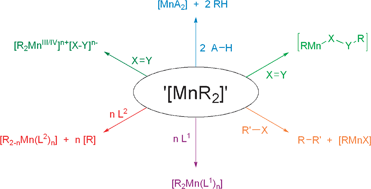Manganese(ii): the black sheep of the organometallic family
Abstract
The organometallic chemistry of manganese in the +2 oxidation state is distinct from the organometallic chemistry of a ‘typical’ transition metal due to a significant ionic contribution to the manganese(II)–carbon bonds. The reduced influence of covalency and the 18-electron rule result in organomanganese(II)


 Please wait while we load your content...
Please wait while we load your content...